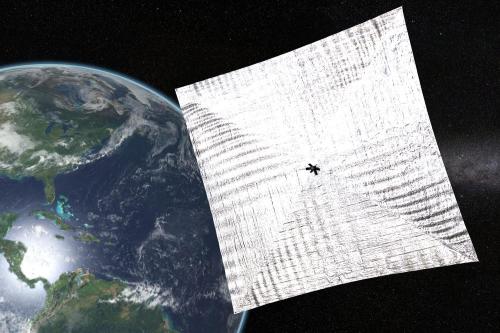
The LightSail 2 solar-powered spacecraft is officially operational — it’s now in orbit and made its first contact with Earth on Tuesday. You’ll now be able to track the ship live using an online dashboard.
The LightSail 2 is the result of a $1 million Kickstarter campaign organized and led by Bill Nye’s non-profit Planetary Society. In an interview with Digital Trends before the ship’s June launch, Nye said that the main objective of the mission is to get the spacecraft to orbit around the Earth using sunlight as its fuel source, demonstrating the viability of “solar sailing.”
The idea is that if the LightSail 2 is successful, the technology could help make it possible to traveler further and deeper into space at a lower cost than is possible today.
The Planetary Society launched a similar spacecraft in 2015, which proved the solar sailing concept could work. That vessel took some pictures of its surroundings but remained at a low enough altitude that it was subject to atmospheric drag. The LightSail 2 is capable of going higher into orbit than its predecessor, reducing that drag.
The LightSail 2 hitched a ride into space last week aboard Space X’s Falcon Heavy rocket. As planned, it delivered its first signals back to mission control at California Polytechnic State University in San Luis Obispo, California on Tuesday. Those first signals included health and status data as well as a Morse code beacon indicating the vessel’s call sign.
If you want to keep track of the spacecraft, the Planetary Society has also launched a new mission control dashboard for the vessel. With it, anyone can access the most up-to-date information about the spacecraft during its journey including information about how long the LightSail 2 has been on its mission, what the temperature is inside the spacecraft, and whether or not its solar sail is deployed. The dashboard will also allow you to find the vessel’s current location and find out if it will be passing overhead.
“The Georgia Tech Prox-1 spacecraft did its job perfectly, delivering LightSail 2 to the desired orbit for solar sailing,” LightSail 2 project manager Dave Spencer said in a statement. “Receiving the initial radio signal from LightSail 2 is an important milestone, and the flight team is excited to begin mission operations.”
The LightSail 2 is expected to remain in orbit for roughly the next year.